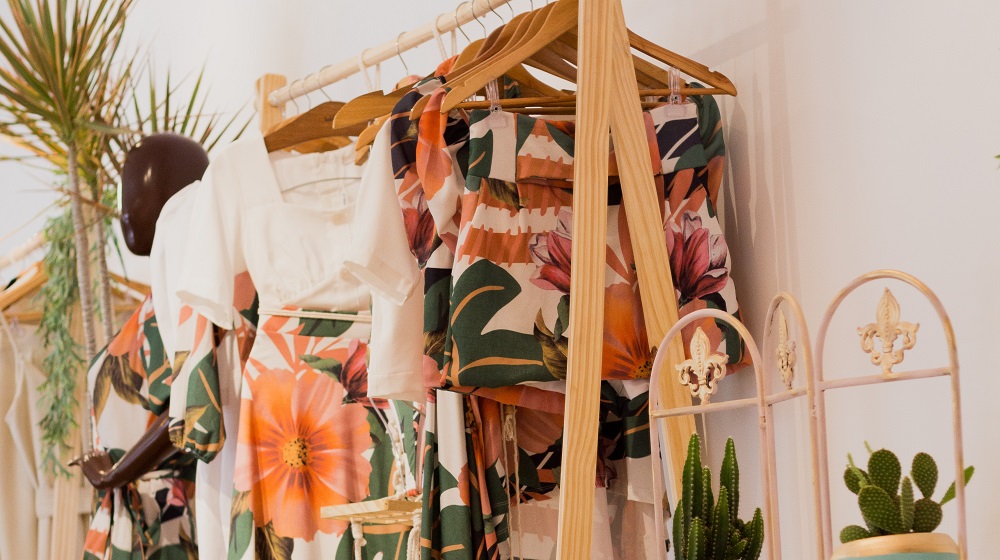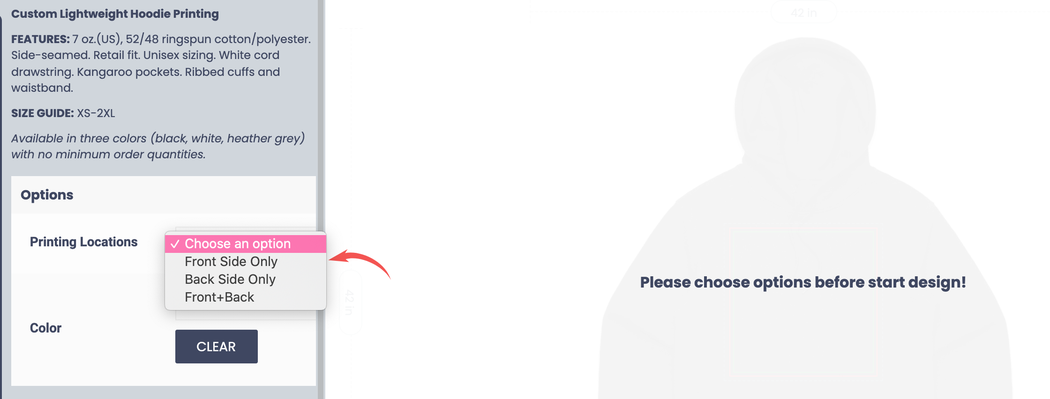
Over the past four years, the print-on-demand (POD) industry has grown by 12%. And if you think it’s slowing down, think again. With the growing demand for one-of-a-kind and customization, 36% of consumers have expectations for personalization, and 48% are willing to wait longer for them to arrive.
While running a print-on-demand business has its ups and downs, it can be a very profitable business. Know the pros, cons, and tips before selling print-on-demand products to ensure you’re prepared and well-equipped to run your business.
What is print-on-demand?
Print-on-demand is a process where you work with a supplier to sell white-label items with customized designs under your own brand name. Selling POD products is ideal if you are starting an online business. How so? The fulfillment method takes place per order and begins as soon as customers complete their orders.
Some common print-on-demand products include T-shirts, hoodies, baseball hats, tote bags, yoga pants, engraved jewelry, and mugs.
T-shirts, in particular, are the most popular — with a marketing value of $3.64 billion in 2020. Print-on-demand T-shirts are becoming a part of a corporation’s business strategy to market its company, products, or offerings.
But like any type of ecommerce business you encounter, there are pros and cons to the process of selling POD products.
You don’t want to be in charge of full customization — designing merchandise from start to finish. By opting to print-on-demand products instead, you won’t have to. POD is cost-efficient, involves lower lifting, and allows you to have control over what your products look like.
Pros: 3 benefits of selling print-on-demand products
Print-on-demand products are ideal for sellers who are short on time. You let a third-party platform handle storing, shipping, and fulfilling inventory, among other tasks. In turn, you can focus more on the creative aspects and marketing your brand to gain more customers and sales.
1. Design customization is simple
Design customization is easy because print-on-demand platforms handle making the product variations. As a seller, all you have to do is upload your product and offer designs for customers to choose from.
And if customers are looking to add their name or specific lettering to a product, great, you can do that easily through your POD provider.
Merch38, for example, is a print-on-demand service provider. It aims to help sellers help people express themselves through ultra-personalized clothing.
Below, you can see how Merch38’s platform offers a variety of printing locations for a white-label hoodie — front, back, or both.

The variety of printing location options on the clothing allows buyers to make their hoodie one-of-a-kind.
2. No required investment in your own inventory
Unless you’re still selling non-print-on-demand items, we have good news for your business. The days of storing a load of your own inventory are over. That responsibility is on your POD platforms, too.
For POD products, inventory is ordered on an as-needed basis. That means you don’t have to worry about keeping old items that will likely go to waste.
Fortunately, the best-selling products used for print-on-demand are popular in the selling market, so there are typically many vendors to choose from. So thankfully, you’re not limited to a specific vendor that may or may not have your product available when ready to order.
Not having to invest in your inventory is a gift from the heavens, especially if you are a new business with limited capital. The reduced overhead allows you to test the market with different designs and lowers risk.
3. Freedom from the responsibility of fulfillment and shipment
As the seller, your main focus is attracting customers to your website to make purchases and grow your brand. Leave the logistics of fulfillment to your print-on-demand platform.
With the right supplier on your side, they’ll deliver fast results — leaving your customers satisfied and ready to continue doing business with you.
Since you won’t have to worry about fulfillment and shipping, you can focus on fostering stronger customer relationships to ensure customer satisfaction. According to Forbes, costumes are glad to pay 17% more for products from businesses with excellent service.
Also, those who leave satisfied are five times more likely to make a purchase again and four times more likely to make a referral.
Cons: 3 print-on-demand product challenges to keep in mind
Print-on-demand providers helping your business are great. But at the same time, they cut into your pockets. You can’t keep all the profit you generate. Rightfully so, some of the gains go into the hands of those who are helping keep your business afloat.
So before you go all in, take a moment to consider some of the challenges below before including print-on-demand products into your inventory.
1. Order fulfillment can take a long time
Because print-on-demand products are made after a customer purchases, the process to create and deliver will take longer than shipping an item that is already completely made.
Between you and your buyers, be the first one to set the expectations for your buyers. Reduce the number of customers reaching out about estimated times of delivery. Make a visible note on each product or checkout page to notify customers about the extended delivery times.
The more information they know ahead of time about their purchase, the more patient they will be when waiting for their customized products to arrive at their door.
According to Printful, a typical POD order can take two to seven business days to fulfill.
On the other hand, fulfillment for non-print-on-demand products can be at customers’ doorsteps much faster. Through Amazon Prime’s Same-Day Delivery, for example, consumers can expect their merchandise to arrive the same day they purchase.
2. Profit margins are low
Because print-on-demand products are often custom, you can’t buy items in bulk for wholesale pricing. As a result, profit margins are lower than non-print-on-demand items.
And unfortunately, because your printing company handles shipping and handling, a large part of your profit goes into their hands.
But to help make bigger profits, consider negotiation shipping rates with your supplier.
3. Returned items are hard to resell
Because print-on-demand items are tailored to individual customers, it can be challenging to resell returned items.
To decrease the number of returns, add a sizing chart and encourage previous customers to leave reviews with photos modeling the product. Have them include measurements and the size they purchased to offer as much accuracy as possible for the next potential buyer.
To decrease the number of items coming back to you, ensure your third-party provider is on the same page about return policies.
4 tips to generate sales for print-on-demand products
As a print-on-demand product seller, you’ve got the advantage of easy customization. Embrace that aspect of print-on-demand to win over shoppers. At the same time, you have to work extra hard to maintain quality because your print-on-demand platform controls so much of the ecommerce process.
By implementing the four tips below after starting your POD business, you’ll be able to gain more recognition, be confident in the products you sell, and ensure higher customer satisfaction.
Tip 1: Give out swag to generate public awareness
Swag is promotional merchandise — goodies like mugs, T-shirts, notebooks, pens — you name it.
It’s common for companies to give these particular products to new hires or pass them around at trade shows to increase brand awareness. And as a print-on-demand product seller, you can give customized products to your existing and potential customers to generate leads.
You have the tools and processes to do so easily, so why not?
Not only will your invested gifts to customers encourage them to come back for more, but they’ll turn into walking billboards whenever they rock what you gave them.
Tip 2: Order samples to check for quality
It can be easy to go without seeing your products since they go straight from your print-on-demand provider to customers. Create a habit of ordering samples beforehand to ensure you’re offering excellent quality.
It’s also good to order samples because what you see online doesn’t always match the real deal in person. So seeing the quality of products for yourself before customers purchase will boost your confidence in selling them.
Tip 3: Send surveys to customers to discover satisfaction level
The opinion on your products shouldn’t stop at what you think about them. Reach out to customers to see what they think about purchasing. Based on their feedback, you’ll know if you should continue with the same suppliers or switch to someone new.
Also, because you may be in the dark about the fulfillment and shipping services between your print-on-demand supplier and customers, you can send surveys for that too as a way to check on how well your POD provider is doing.
Tip 4: Create POD content to drive website traffic
Through print-on-demand content creation, you can distribute consistent, relevant, and valuable information on your website that connects to the unique products you sell. And according to WPForms, small businesses with blogs get 126% more lead growth compared to those that opt out.
Include blog posts on trending print-on-demand items — including the ones you sell. With a strong content strategy and SEO efforts in play, your brand’s writing piece can make its way on Google’s search engine results page.
In addition to blog posts, share Twitter threads about print-on-demand products, benefits of selling, customer success stories — linking your content back to your store’s website.
The more information you offer, the more knowledgeable you will seem. With those two factors in play, you’ll likely attract new buyers.
Offer a variety of print-on-demand products to grow your business
Print-on-demand products not only allow you to play around with different designs, but you can also explore different products to expand your offerings.
If you’ve been selling customizable T-shirts and they have been selling quickly, you may want to consider venturing out to similar items like long-sleeve shirts or hoodies (especially when seasons change).
Shift your mindset to be data-driven to experiment with new products. Throughout the process, you’ll discover what additional print-on-demand products are worth keeping and which are not adding value to the business.
If you’re ready to offer print-on-demand products, check out our Online Store builder to get started today.